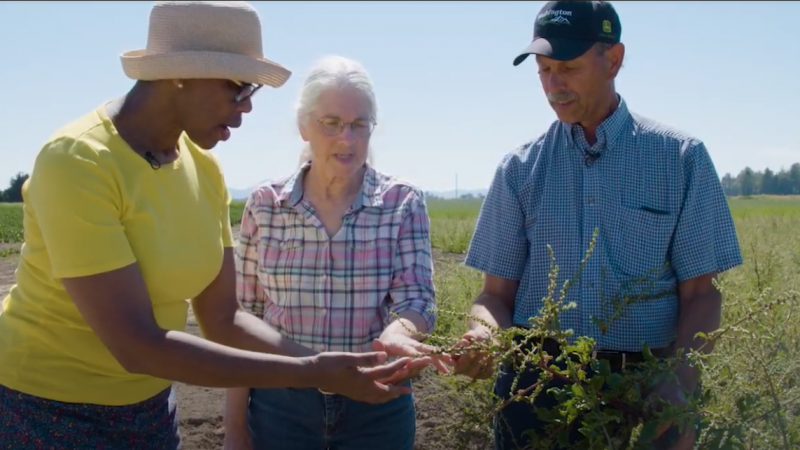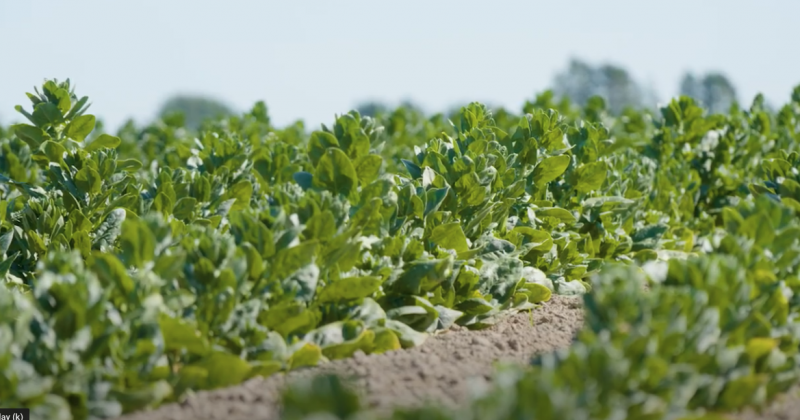Gone to Seed

It’s common knowledge that most plants start from seed. A seed is planted, and shortly thereafter a tiny seedling will emerge from the soil, ready to photosynthesize and grow into a mature plant. But, where did that seed come from? Well yes, a plant produced that seed, and there’s a lot that goes into the plant that grew the seed!
The Skagit Valley, located in northwestern Washington, is home to a diverse community of agriculturalists. A variety of crops, ranging from tulips to turnips,flourish in the fertile soils and mild climate of the Skagit Valley. Dave and Annie Lohman are two of the many growers that call the Skagit Valley home. The Lohman Farm produces seed for vegetable crops including beets, broccoli, cabbage and spinach. They take on the challenge of growing these finicky foods because the Skagit Valley “is one of the few areas in the world where you can successfully grow some of these crops. It just happens to be the most unique climate that everything agrees with,” said Dave.
When compared to other vegetable seed-producing areas, the Skagit Valley outyields all others and offers consistency that is hard to come by. Skagit County is known as a significant world contributor, producing approximately eight percent of the world’s spinach seed, 25 percent of the world’s cabbage seed, and 25 percent of the world’s beet seed. The Lohmans have been in the seed business for decades. They represent the first step to producing the vegetables we all enjoy. Seed from the Lohman Farm is shipped to California and elsewhere to be planted and grown into vegetables, which, in turn, are sold at grocery stores across the country.
But vegetable seed production is highly technical and often involves complicated rotation intervals sometimes stretching beyond a decade. Dave and Annie can’t just rely on the ideal weather to grow their crop for them. An immense amount of planning and management goes into producing a pure seed crop. Depending on the vegetable, the methods used to plant, pollinate and harvest can vary. For example, Lohman Farm produces spinach, which requires their fields to be spaced properly to avoid cross-pollination from other fields. Annie adds, “They’re wind pollinated, so it’s very important that you don’t accidentally contaminate someone else’s crop on the bee-pollinated crops such as cabbage,” said Annie. Bees can travel up to two miles to collect pollen, so strategic field and hive placement is imperative to ensure successfully pollinated crops.
Strategic planning and communication between farmers make Skagit Valley seed production a success. The Lohmans work with their neighbors to meet the needs of their crops and the many other farmers in the region. Crops must be rotated and isolated to maintain seed purity. Farmers go as far as sharing land to make this cycle work. As urbanization and industrialization continue to encroach upon the 80,000 acres of agricultural land in the region, opportunities for food production are lost. “If you reduce the amount of available cropland for seed production, you’re losing opportunity,” said Annie. Skagit Valley Land is precious to agriculture, and farmers like Dave and Annie are working hard to keep it in production. “We have all these factors that make it ideal for growing a lot of crops besides seed crops, and it would be a tremendous shame if that opportunity goes away.”
Fortunately, progressive agriculturists like Dave and Annie Lohman are focused on continuing their vital work to produce high quality seed products to support the vegetable industry. Next time you are enjoying a beet salad or spinach-artichoke dip,you have farmers like the Lohmans to thank for laying the groundwork.


